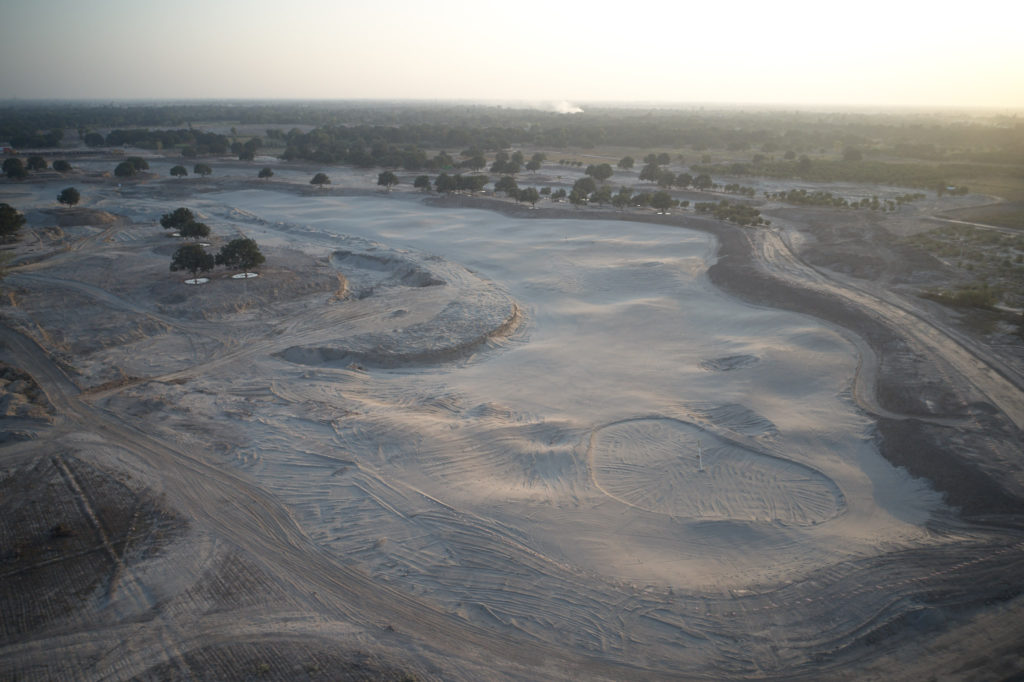DISTANCE vs DESIGN
 Back in February, golf’s governing bodies published the Distance Insights Report (DIR) which concluded that longer distances, longer courses and playing longer tees are unsustainable for a healthy future of the game and needs to be addressed. Fast forward a few months and with professional golf now returning to our screens, it seems golf has started back where we left it.
Back in February, golf’s governing bodies published the Distance Insights Report (DIR) which concluded that longer distances, longer courses and playing longer tees are unsustainable for a healthy future of the game and needs to be addressed. Fast forward a few months and with professional golf now returning to our screens, it seems golf has started back where we left it.
In the first few tournaments back, Bryson DeChambeau has taken the lead role as golf’s distance super villain by causing a riot off the tee. During the first PGA Tour event back, the Charles Schwab Challenge, DeChambeau gained an average of 31.7 yards off the tee, on holes seeking distance, reducing his second shots to maybe two or three irons shorter. More like wedges! With numbers like 365 yards of carry and with 200mph ball speed recorded on the range, it caught the attention of the golfing world, including analysts such as our very own Sir Nick Faldo.
Without question, DeChambeau’s recent efforts are impressive. And for balance, so is watching the likes of Rory, Brooks, Dustin or Rahm bomb drives down aggressive lines. They create an exciting spectacle for fans, particularly on holes that offer drama through risk/reward opportunities and strategy – such as Royal St George’s 14th, that will now test the world’s best next year, the Old Course’s Road Hole, and countless others at Open venues.
But herein lies a problem. Many courses played on the leading Tours do not boast the inherent drama and interest that classic, higher ranked courses possess. Of course, location and ability to stage large events have to be considered in choice of Tour venues but too often they are at the expense of golfing quality. Unfortunately, extreme length is also a defining factor, with modern professionals able to simply blast their way past the challenges that more compact, older and strategic courses once asked. As a result, they have largely been relegated in place of newer (or renovated), less strategic and longer alternatives, and whilst the likes of Augusta National have the ability to ensure their holes’ strategies remain relevant on an almost annual basis, most courses do not. But the perception that length is paramount persists.
Sir Nick Faldo was asked recently about the effect of increased hitting distance in the game. He said:
“It’s actually really hurt the classic courses because some of them have tried to build new tees [to increase length and retain strategy] … I’ve been to some courses where you walk back 200 yards to make the hole come alive again…”
This isn’t doing golf any favours. The pursuit of length by adding tees or moving bunkers in the interests of countering distance does risk relegating the absolute heart of the game: playing strategy. Something the DIR highlighted: “Golf is about using a broad and balanced set of skills and judgements … on holes of varying designs, pars and lengths”. Going back to DeChambeau, when you can drive past all fairway hazards and then use shorter irons or wedges to reach the green, where is the strategic challenge and interest? The room for creativity we witnessed from the likes of Seve appears to be disappearing in the professional game, with it becoming more and more one dimensional to the extent that it risks alienating those who take a more inventive approach to the game. In architectural terms, the game’s extreme length seems to be pushing golf back towards the runway layouts of the mid-20th Century.
As designers we always seek to be creative in delivering golfing experiences that challenge and ask questions of golfers’ strategic skill. The variety of golf’s original courses is what popularised the game and so it shouldn’t come as a surprise that a balance of short and long holes, as opposed to a predominance of one or the other, is what creates spectacular, interesting and challenging golf. Two of the world’s finest short par 4s – Riviera and Royal Melbourne’s 10th holes – are evidence enough of that; equally, Pebble Beach is renowned as the shortest PGA Tour course at 6,816 yards, yet still consistently ranks as one of the best out on the PGA Tour.
Admittedly, it’s very easy to see golf through just the prism of the professional game given it’s the only part that gets widespread exposure, so perception of it is key. Its exposure hides the fact that golf is largely an amateur sport, and whilst hitting distances have increased amongst professionals in recent years, amateurs’ distance hasn’t, according to R&A data. Nevertheless, the amateur game has come to ‘believe’ that distance is paramount, largely fostered by the rhetoric surrounding professional events, coupled with new technology from golf hardware brands and their pursuit of marketing distance.
The distance debate is not about Tiger-proofing but the sustainability of golf itself and as architects, we must consider the many factors involved. There’s a fine line in balancing the vagaries of the sport and the differences between the amateur and professional games, as well as between the courses themselves, their environments and their communities. Golf has a responsibility beyond just the game and so there can’t possibly be a simple answer, it’s too complicated. But its focus should be a broad, balanced and healthy future.